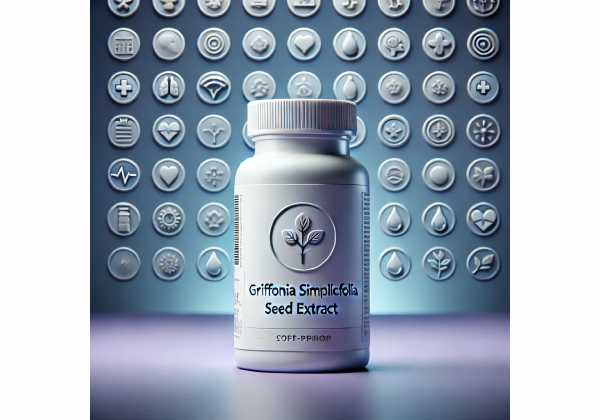Green tea extract: Weight Management, Heart Health, Blood Sugar, and Safe Dosage
Green tea extract condenses the leaf’s most studied compounds—catechins like EGCG (epigallocatechin gallate), plus caffeine and L-theanine—into capsules, powders, or liquids. People use it to support body composition, cholesterol and triglycerides, blood pressure, and glucose control, and to add a gentle focus lift without the edginess of strong stimulants. Because extracts deliver far more catechins per dose than a...
Green-lipped mussel extract: What It Is, Proven Uses, Daily Dosage, and Side Effects
Green-lipped mussel extract (GLME) comes from Perna canaliculus, a shellfish native to New Zealand’s clean coastal waters. Unlike generic “fish oils,” GLME concentrates rare marine fatty acids (including eicosatetraenoic acid, ETA), omega-3s (EPA, DHA), sterols, and minor lipids that act on inflammatory pathways such as 5-LOX and COX. People most often use it for joint comfort and mobility in...
Griffonia simplicifolia seed extract: Evidence-Based Benefits, How to Use It, Dosage, and Safety
Griffonia simplicifolia seed extract is the primary natural source of 5-hydroxytryptophan (5-HTP)—the direct precursor to serotonin, which also converts to melatonin. Because serotonin influences mood, appetite, pain perception, and sleep, 5-HTP from Griffonia has become a popular supplement for healthy mood balance, better sleep quality, supporting migraine prevention, and easing fibromyalgia symptoms. Evidence ranges from preliminary to moderate depending...
Grifola frondosa: Immune Modulation Benefits, Product Selection Tips, Dosage Ranges, and Precautions
Grifola frondosa—better known as maitake or “hen-of-the-woods”—is a culinary mushroom with a long history in East Asian wellness traditions and growing interest in modern integrative care. Its extracts, especially beta-glucan–rich fractions, are studied for immune modulation, metabolic support, and adjunctive use during oncology treatment. Unlike stimulants that push one pathway hard, maitake tends to “tune” immune activity, helping certain...
Ground pine: Complete Guide to Benefits, Uses, Dosing, and Side Effects
Ground pine (Lycopodium clavatum), also called running clubmoss, is a creeping evergreen long used in European folk medicine and still sold today in powders, tinctures, and homeopathic pellets. Modern research focuses on two very different things: the plant’s alkaloids (nitrogen-bearing compounds that can inhibit the enzyme acetylcholinesterase) and its pollen-like spores whose tough shells are used as natural microcapsules....
Guaiacum: What It Is, Potential Benefits, Proper Use, Dosage Advice, and Risks
Guaiacum—best known as lignum vitae—comes from small Caribbean and Central American trees whose heartwood yields a dense, aromatic resin. For centuries, this resin was used in folk medicine for joint stiffness, chest congestion, and skin complaints. Today, guaiacum still appears in niche herbal formulas and remains relevant in medicine because its resin powers the classic guaiac fecal occult blood...
Guanidinoacetic acid: Science, Benefits, How to Take It, and Side Effects
Guanidinoacetic acid (GAA) is the body’s direct precursor to creatine, the high-energy compound that helps muscle and brain cells recycle ATP. Interest in GAA has grown because it can raise creatine availability when dietary intake or endogenous production falls short, and because some people report better tolerance or different effects than with creatine alone. In small human trials, daily...
Guar gum: Digestion, Cholesterol, Blood Sugar Control, Dosage, and Safety Explained
Guar gum is a soluble fiber made from the endosperm of the guar bean (Cyamopsis tetragonoloba). In kitchens and factories, it thickens, stabilizes, and improves texture at tiny doses. In clinics and wellness routines, it can help normalize bowel function, modestly lower LDL cholesterol, and blunt post-meal glucose spikes when used correctly. Not all guar is the same, though....
Guava leaf extract: Evidence-Based Benefits, Best Uses, Recommended Dosage, and Side Effects
Guava leaf extract comes from the leaves of Psidium guajava, a tropical tree long used in traditional medicine. Today, standardized extracts, teas, and mouthrashes made from the leaves are studied for a few practical health goals: easing acute infectious diarrhea, supporting healthy post-meal blood sugar, and improving gum health. These potential benefits are attributed to a dense mix of...
Guayule: Hypoallergenic Latex Benefits, Real-World Uses, How to Choose, and Safety
Guayule (Parthenium argentatum) is a desert shrub from northern Mexico and the U.S. Southwest that produces a high-performance natural rubber. Unlike traditional latex from Hevea brasiliensis, guayule latex is essentially free of the major proteins that trigger latex allergy, making it a valuable option for medical gloves, barrier films, and other products that need both comfort and safety. The...
Guduchi: Immune Support, Metabolic Effects, Dosage by Goal, and Safety Profile
Guduchi (Tinospora cordifolia) is a climbing vine long used in Ayurveda for immune balance and resilience. Modern studies explore its potential to support upper-respiratory comfort, metabolic health, and overall vitality by modulating inflammatory signaling and stress responses. The stem is most studied; preparations include standardized extracts, decoctions, and the popular compressed extract “Ghana vati.” While generally well-tolerated in short...
Guggul: What It Is, Proven and Potential Benefits, How to Use It, and Precautions
Guggul is the aromatic gum resin from the tree Commiphora wightii, long used in Ayurveda for metabolic, inflammatory, and skin concerns. Modern supplements usually provide a standardized extract (often called “guggulipid”) that concentrates active sterols known as guggulsterones. Interest in guggul surged because these molecules interact with nuclear receptors that help regulate cholesterol and bile acid balance. Yet the...
Guggulsterone: What It Does, How Much to Take, Interactions, and Side Effects Explained
Guggulsterone is a plant-derived sterol found in the resin of Commiphora wightii (guggul), a small desert tree used for centuries in Ayurvedic medicine. Modern research shows that guggulsterone interacts with nuclear receptors in the liver and intestines that regulate bile acids, cholesterol handling, inflammation, and drug metabolism. That makes it an intriguing—yet complex—compound for people looking at metabolic health,...
Gum arabic: Prebiotic Fiber Benefits, How to Use It, Dosage, and Safety
Gum arabic—also called acacia gum—is a natural, water-soluble dietary fiber obtained from the hardened sap of the Acacia senegal and Acacia seyal trees. Long used as a stabilizer and emulsifier in foods and beverages, it has also gained attention as a gentle prebiotic fiber that mixes cleanly into liquids without grit or gel. People choose gum arabic to support...
Gynura procumbens: Metabolic Support, Vascular Health, Dosage, and Safety Explained
Gynura procumbens—often called “longevity spinach,” “Sambung Nyawa,” or “leaves of life”—is a leafy plant traditionally eaten and brewed as tea across Southeast Asia. Its leaves are rich in polyphenols and flavonoids that have drawn attention for potential support in blood sugar, blood pressure, lipids, and inflammation. Early laboratory and animal studies are promising, and a few small human studies...
Fadogia agrestis: Testosterone, Libido, Mechanisms, Dosage, and Safety Explained
Fadogia agrestis is a shrub from West and Central Africa long used in folk medicine for vitality and sexual health. In the last few years it has surged in popularity as a “natural testosterone booster.” What does the science actually show? Most published data come from animal experiments using aqueous stem extracts. These studies suggest effects on sexual behavior,...




















